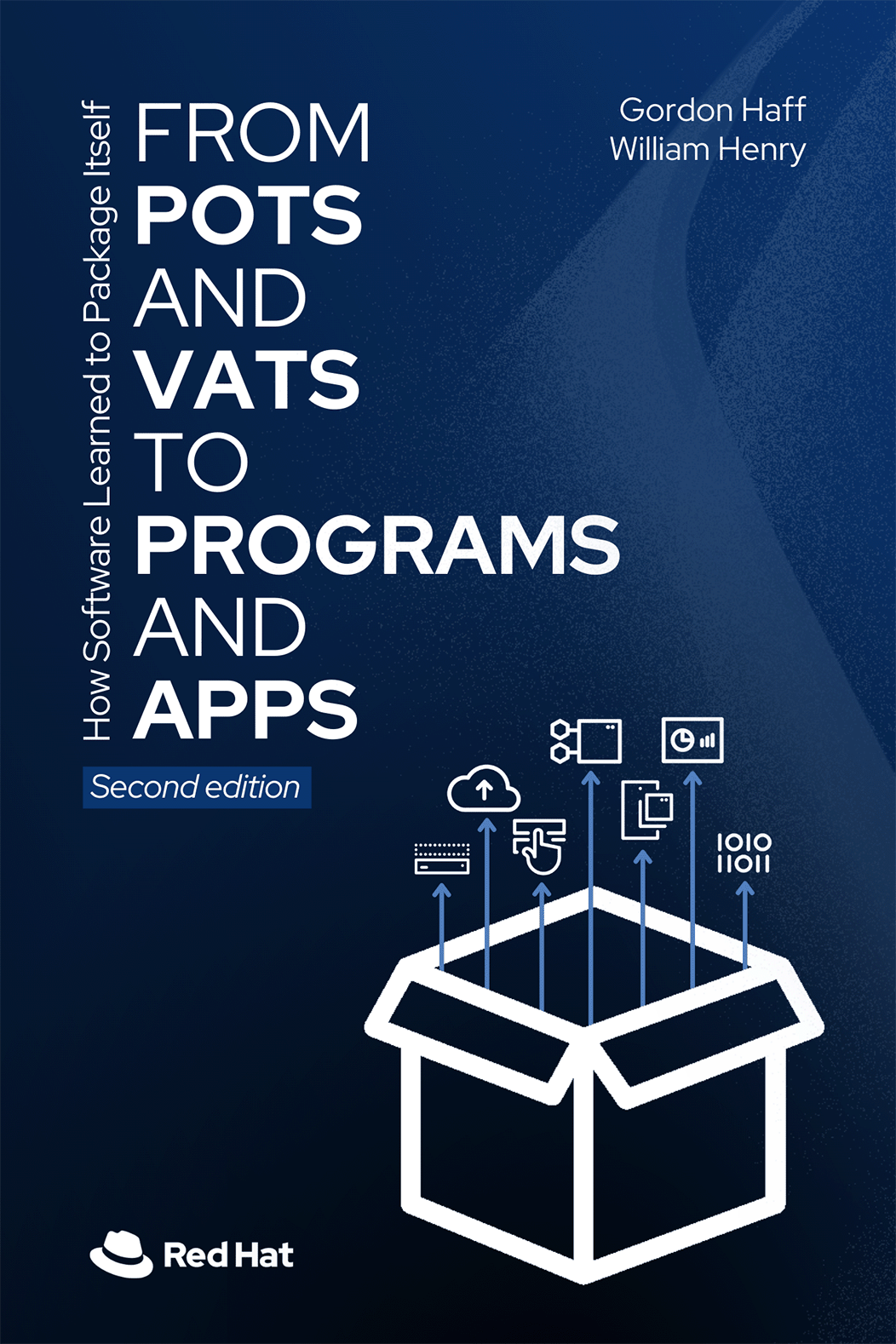by Gordon Haff and William Henry

This 2022 edition has been extensively revised to capture the many market changes, especially in the container space, since the first edition was published. The updated content also includes a much expanded discussion of balancing open source flexibility with user convenience.
Monkigras in London during January 2017 had packaging as its theme, both in the software and the more meta sense. James Governor graciously extended me an invitation to speak. The resulting talk, A Short History of Packaging (video here), described how packaging in both retail and software has evolved from the functional to something that improves the buying and using experience.
I’d been looking to write a new book for a while. I knew I wanted it to relate to the containers, microservices, cloud broadly, etc. space, but I didn’t really have an angle. I considered just rewriting my three-year old Computing Next but so much had changed and so much remained in flux that the timing didn’t feel right.
But packaging! Now there was an angle and one that I could work on together with my Red Hat colleague William Henry (who is a senior consulting engineer and works on DevOps strategy).
So that’s what we did. We set a target to do a book signing at Red Hat Summit in early June. We mostly made it. We signed a pre-release version and have spent the past month or so working off-and-on to polish up the contents, give colleagues the opportunity to review, and update a few things based on various industry announcements and events.
We’re finally ready to go. You can download as a free PDF. There will also be a paperback version orderable through Amazon. Given the free PDF, we don't plan to offer a Kindle version for sale.
The thesis of the book is that if you think about packaging broadly, it highlights critical tradeoffs.
Unpackaged and unbundled components offer ultimate flexibility, control, and customization. Packaging and bundling can simplify and improve usability—but potentially at the cost of constraining choice and future options.
Bundling can also create products that are interesting, useful, and economically viable in a way the fully disaggregated individual components may not be. Think newspapers, financial instruments, and numerous telecommunications services examples.
Open source software, composed of the ultimately malleable bits that can be modified and redistributed, offers near-infinite choice.
Yet, many software users and consumers desire a more opinionated, bundled, and yes, packaged experience—trading off choice for convenience.
This last point is a critical tension around open source software and, for lack of a better umbrella term, “the cloud” in the current era. Which makes understanding the role that packaging may play not just important, but a necessity. Ultimately, packaging enables open source to create the convenience and the ease of use that users want without giving up on innovation, community-driven development, and user control.